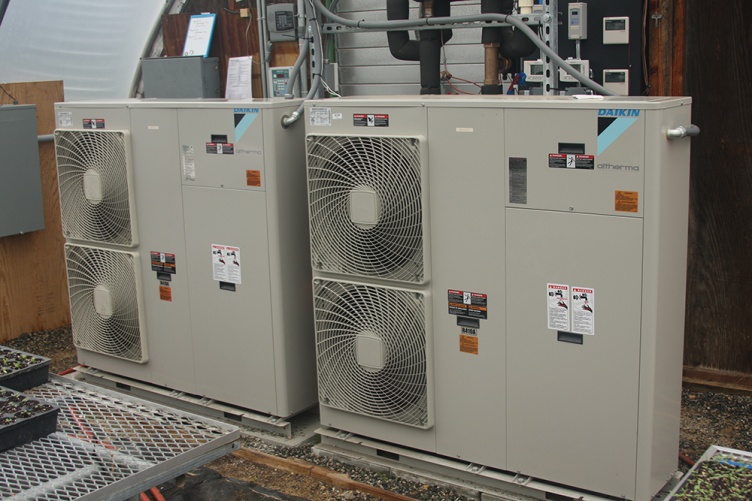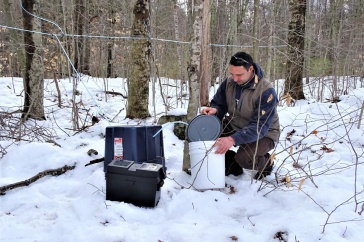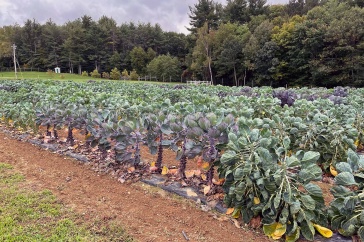
With the heat pump system, UNH has used the two air-to-water heat pumps and an insulated thermal water holding tank to capture excess heat in greenhouses that is then used to heat the greenhouses when needed. The heat pumps can extract heat from ambient temperatures down to 20 degrees Fahrenheit.
Preliminary results of a University of New Hampshire research project investigating the potential cost savings of using heat pumps to heat and cool greenhouses suggest that heat pumps could substantially reduce heating oil consumption.
In the fall of 2013, a heat pump system was installed in one of two identical greenhouses, at the Woodman Horticultural Research Farm, to both heat and cool the greenhouse. In the spring of 2014, researchers found the heat pump system reduced oil consumption by 255 gallons. The project was funded by the NH Agricultural Experiment Station at the UNH College of Life Sciences and Agriculture.
“The rising cost of heating greenhouses has become unsustainable for many growers. They are forced to shut down operations and wait for the coldest portion of the heating season to pass. This limits the amount of income that these growers can attain from their operations, and also requires the importation of vast amounts of produce from other regions, creating a potentially unnecessary financial drain on the region and large environmental footprint,” said Brian Krug, a researcher with the NH Agricultural Experiment Station researcher and UNH Cooperative Extension specialist.
According to Krug, the conventional greenhouse used 711 gallons of oil from February to April 2014 while the greenhouse with the heat pump system used 456 gallons. The heat pump greenhouse used an extra $145 in electricity during the period, and oil heat was used as a backup on cloudy days when there was no solar gain from the heat pump system.
Over the past ten years, fuel prices have risen dramatically. In 2003, the average price for heating oil was $1.50 and gallon. Currently the average price for heating oil is $3.24 a gallon, according to the NH Office of Energy and Planning, and similar cost increases have occurred for other fossil fuel sources.
According to Krug, greenhouse heating systems are typically oil or propane forced air systems that blow warm air into the greenhouse space. Greenhouses typically are very inefficient building structures. Fuel cost for a standard double-polyethylene film 30-by-90-foot greenhouse in the Northeast when heated with a #2 heating oil at $4 gallon can exceed $23,000 per year.
“Most greenhouse operations are small rural operations, have no access to natural gas, and are forced to use expensive bottled propane gas or heating oil to heat the greenhouses,” he said.
With the heat pump system, UNH has used the two air-to-water heat pumps and an insulated thermal water holding tank to capture excess heat in greenhouses that is then used to heat the greenhouses when needed. The heat pumps can extract heat from ambient temperatures down to 20 degrees Fahrenheit.
The public, including growers, is invited to learn more about Krug’s research at a Greenhouse Field Day Thursday, Dec. 4, 2014. The event starts at 1 p.m. at the Woodman Horticultural Research Farm and concludes at the Macfarlane Greenhouses with a presentation on Krug’s hydroponics research. Attendees are invited to attend the UNH Poinsettia Trials Open House, also taking place at the Macfarlane Greenhouses.
-
Written By:
Lori Tyler Gula, PhD | NH Agricultural Experiment Station | lori.gula@unh.edu | 603-862-1452

















































